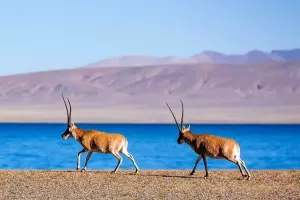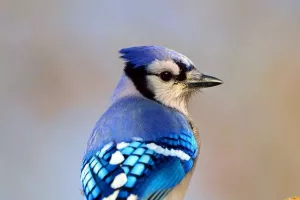Giraffes are beautiful animals who can be found roaming the savannas of Africa. They are the tallest land animals alive today, with adult giraffes standing up to 20 feet (6 meters) tall. While their remarkable height is common knowledge, many people know little else about these gentle giants. Despite their impressive stature, giraffes keep a relatively low profile, often quietly munching leaves in the background while other animals hog the spotlight.
What else do you know about them? Here are some giraffe facts so that you can learn more about these amazing creatures.
1.Where do they live?
Giraffes inhabit open woodland and wooded grassland. They also may be seen in open grassland, and occasionally at the forest’s edge. Giraffes often frequent drainage-line vegetation in the dry season, but riparian thickets are the only place you are likely to see them in dense vegetation. One often observes giraffes stretching as high as they can go and extending their extremely long, leather-like tongues to pluck a couple of leaves off an umbrella thorn acacia.
2. Giraffes have dark and long tongues
A giraffe's dark tongue (which can be blue, purple or black) can actually prevent sunburn, which is important since it gets lots of sun exposure from all that leaf eating. The diet of a giraffe consists mainly of fresh leaves and twigs from treetops, especially acacia. In addition to the obvious boost they get from their long legs and necks, their tongues play a key role in helping them access this exclusive food source. Giraffes' tongues are about 18 inches (45 cm) long. They're also prehensile, helping giraffes wrap them around leaves and deftly pull them from between the thorns found on acacia trees.
3. Giraffes Hum to Each Other at Night
Aside from subtle grunts and snorts, it was long believed giraffes don't vocalize. With such long necks, many scientists reasoned, it would be too difficult for giraffes to generate enough airflow to make audible sounds. However, in a 2015 study, a team of biologists reported evidence of giraffes at three zoos humming to each other at night. Much is still unknown about these hums, which the researchers describe as "rich in harmonic structure, having a deep and sustained sound." It's unclear if they are truly a form of communication, but the study's authors speculated they may serve as contact calls to help the animals stay in touch after dark.
4. They Don't Drink Much Water
The giraffe's long neck isn't quite long enough to enable it to drink water while standing upright. To get its mouth down to a water source, a giraffe must either kneel or awkwardly splay out its front legs. Giraffes only drink water once every few days; even when water is readily available, they rarely drink it, according to the Giraffe Conservation Foundation. Instead, giraffes get most of their water from the plants they eat. They may be more resistant to drought than some other animals. The tall trees on which they feed tend to have deeper roots, enabling the trees to tab into water deep underground that isn't available to shorter trees — or the shorter animals that feed on them.
5. Giraffe spots are unique to each individual
All giraffes have spotted coats, but no two giraffes have the same pattern. Some researchers can even recognize individual giraffes by their distinctive patterns. These spots may have evolved at least partly for camouflage, which could be especially valuable for youngsters who are still short enough to be vulnerable to predators. The spots might also help dissipate heat around a giraffe's body, since the skin temperature is slightly higher on the darker regions, and could play a role in social communication.


